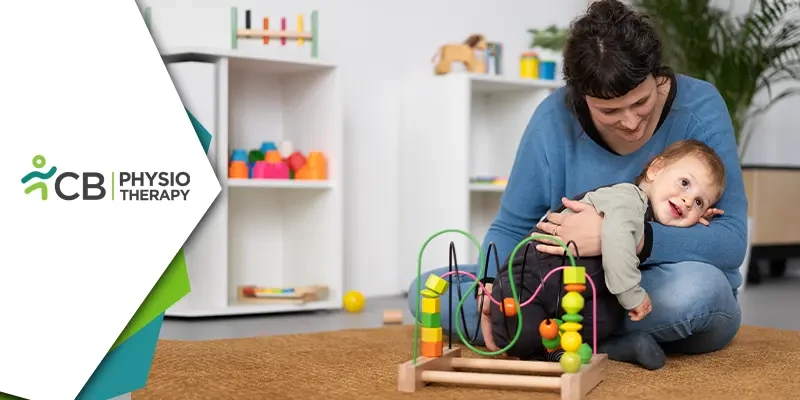Sensory processing is a fundamental aspect of a child's development, influencing their ability to engage with their environment, learn new skills, and perform everyday activities. Children with sensory processing issues may face challenges that affect their touch, balance, coordination, and spatial awareness. Physiotherapy offers a comprehensive and individualized approach to sensory training, playing a crucial role in pediatric rehabilitation. This blog explores how physiotherapy aids in sensory training for children, the techniques employed, and the overall benefits for pediatric patients.
Understanding Sensory Processing Issues in Children
Sensory processing issues, also known as sensory processing disorders (SPD), occur when the brain has difficulty receiving and responding to information from the senses. These issues can manifest in various ways, including:1: Hypersensitivity: Overreacting to sensory stimuli, such as loud noises, bright lights, or certain textures.
2: Hyposensitivity: Underreacting to sensory stimuli, leading to a craving for more intense sensory experiences.
3: Sensory discrimination problems: Difficulty in distinguishing between different sensory inputs, such as differentiating textures or sounds.
Children with sensory processing issues may exhibit behaviors such as avoiding certain textures, being overly sensitive to touch or sound, seeking excessive sensory input (e.g., spinning or crashing into objects), or having difficulties with coordination and balance.
Role of Physiotherapy in Sensory Training
Physiotherapy is instrumental in addressing sensory processing issues through targeted sensory training. By utilizing a variety of techniques and interventions, physiotherapists can help children improve their sensory processing abilities, enhance motor skills, and promote overall development. Key aspects of physiotherapy in sensory training include sensory integration therapy, proprioceptive activities, vestibular exercises, and tactile stimulation.1: Sensory Integration Therapy
Sensory integration therapy is a primary approach used by physiotherapists to help children with sensory processing issues. This therapy involves structured play activities that are designed to challenge and stimulate the child's sensory systems. Key components of sensory integration therapy include:
a) Play-based activities: Using play as a medium to engage the child in sensory experiences. Activities may include swinging, climbing, and obstacle courses.
b) Structured environment: Creating a controlled environment that provides the right level of sensory input to challenge the child without overwhelming them.
c) Gradual exposure: Gradually increasing the intensity and complexity of sensory stimuli to build the child's tolerance and adaptive responses.
2: Proprioceptive Activities
Proprioception refers to the body's ability to sense its position and movement in space. Children with sensory processing issues often have difficulties with proprioception, leading to challenges with coordination and motor planning. Physiotherapists use proprioceptive activities to enhance this sense, including:
a) Weight-bearing exercises: Activities that involve pushing, pulling, or lifting weights to provide deep pressure input to the muscles and joints. Examples include carrying weighted objects, pushing a heavy cart, or climbing stairs.
b) Joint compressions: Applying gentle pressure to the child's joints through activities such as jumping, bouncing on a therapy ball, or using a trampoline.
c) Resistance activities: Engaging in exercises that require the child to work against resistance, such as using resistance bands or performing push-ups.
3: Vestibular Exercises
The vestibular system, located in the inner ear, plays a critical role in balance and spatial orientation. Children with sensory processing issues may have an under- or over-responsive vestibular system, leading to difficulties with balance and coordination. Vestibular exercises used in physiotherapy include:
a) Swinging and spinning: Using swings, spinning boards, or therapy balls to stimulate the vestibular system and improve balance and spatial awareness.
b) Balance activities: Engaging in activities that challenge the child's balance, such as walking on balance beams, standing on one leg, or using a balance board.
c) Movement-based games: Incorporating games that require the child to move in different directions, such as Simon Says, hopscotch, or obstacle courses.
4: Tactile Stimulation
Tactile stimulation involves providing sensory input to the skin through touch. Children with sensory processing issues may have hypersensitivity or hyposensitivity to touch, leading to avoidance or seeking behaviors. Physiotherapists use various tactile stimulation techniques to help children regulate their tactile responses, including:
a) Textured materials: Introducing different textures through activities such as playing with sand, rice, or textured toys.
b) Brushing and massage: Using brushes or massage techniques to provide deep pressure touch to the skin, which can be calming and organizing for the sensory system.
c) Sensory bins: Creating bins filled with materials like beans, rice, or water beads for the child to explore and manipulate.
Benefits of Sensory Training in Pediatric Rehabilitation
Sensory training through physiotherapy offers numerous benefits for children with sensory processing issues. Some of the key benefits include:1: Improved sensory regulation: Sensory training helps children develop better regulation of sensory input, reducing hypersensitivity or hyposensitivity and leading to more appropriate responses to sensory stimuli.
2: Enhanced motor skills: By improving proprioception, balance, and coordination, children can develop fine and gross motor skills, which are essential for tasks such as writing, dressing, and playing sports.
3: Increased independence: As sensory processing improves, children can become more independent in daily activities, enhancing their confidence and self-esteem.
4: Overall development: Sensory training supports overall development by helping children integrate sensory input more effectively, leading to improved learning and cognitive function.
Physiotherapy plays a crucial role in sensory training during pediatric rehabilitation, offering a comprehensive and individualized approach to addressing sensory processing issues. By providing targeted and effective sensory training, physiotherapy empowers children with sensory processing issues to reach their full potential and thrive in their everyday lives.

